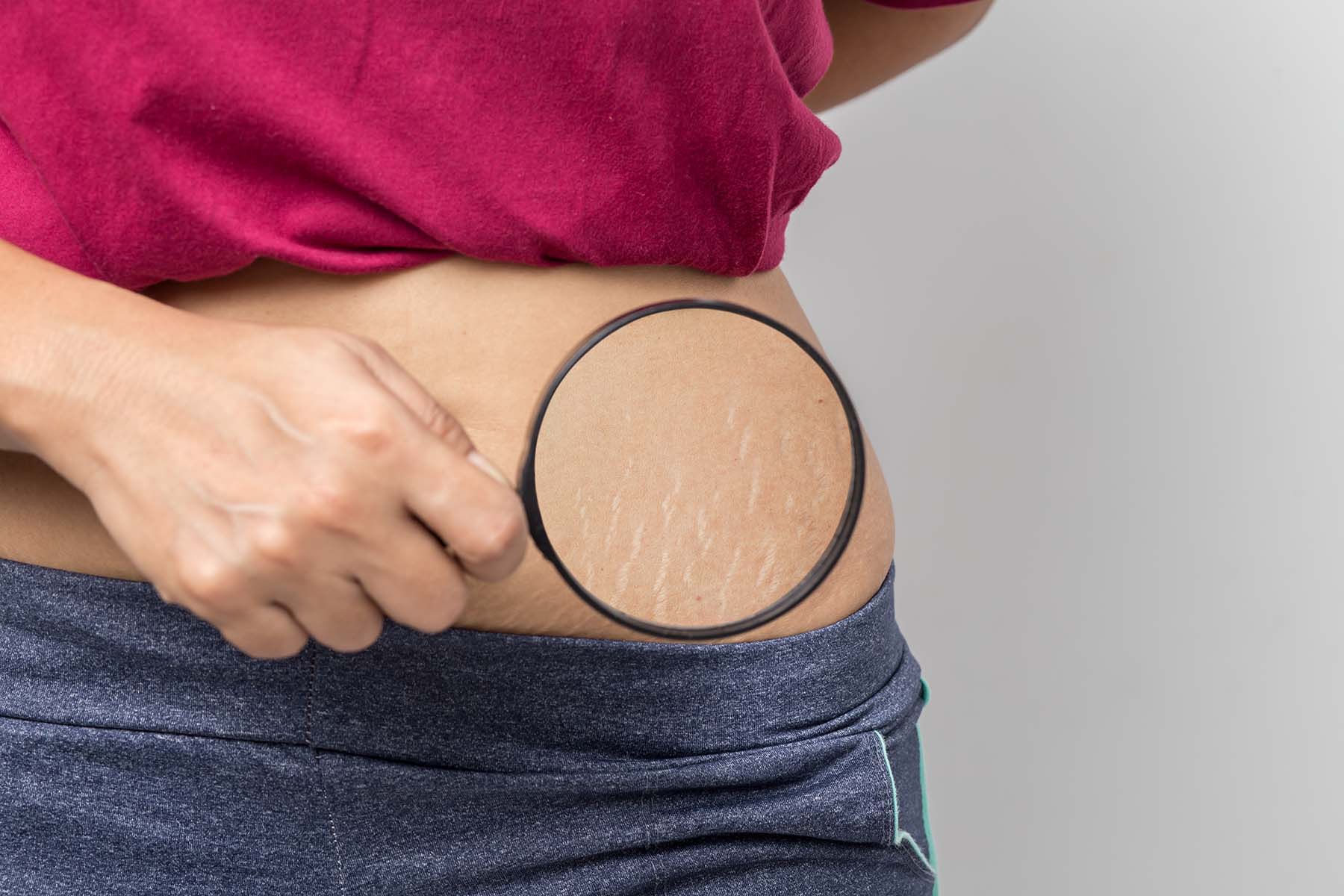Get Rid of Those Stretch Marks

Stretch marks — almost all of us have them — and we all want them to go away. Women often develop them during pregnancy and after growth spurts, such as those kids experience during puberty. And anyone who has gained or lost a significant amount of weight may have had to deal with them.
How can I get rid of my stretch marks?
There are plenty of over-the-counter topical treatments on the market and home remedies on the internet claiming to rid you of the irritating marks. But, “you shouldn’t put all your hopes in a bottle of cream,” says Dr. Shasa Hu, a dermatologist with the University of Miami Health System.
Unfortunately, moisturizing the skin does not help prevent nor reduce stretch marks.
Aloe vera gel and even cocoa butter can’t penetrate deep enough to repair the collagen damage that causes thick, raised scar tissue on the surface of the skin.
While effective for shallower skin imperfections, other home remedies like exfoliating scrubs, chemical peels, and microdermabrasion cannot improve stretch marks. Dermarollers are sold for home use and claim to work as well as doctor-performed procedures, “but these less sophisticated devices can cause infection and inflammation,” Dr. Hu warns, “because you use the same tool over and over.”
Treat your stretch marks when they are pink or red.
Don’t wait until they are shiny, silvery, and matured. “When these marks are new and developing, the skin is most receptive to treatments,” Dr. Hu says.
If you want to avoid more invasive treatments or can’t afford them, try prescription-strength tretinoin, a derivative of vitamin A often called by its brand name, Retin-A, she says. Tretinoin can strengthen your skin, improve your skin’s elasticity, even out skin tone, and promote the production and healing of collagen. “It may not provide tremendous improvement, but it’s worth trying,” Dr. Hu says.
Think of stretch marks as breaks in your skin’s collagen fibers. You can slightly reduce these indentations by filling in the ditch with tretinoin.
If your marks are more prominent, or if you’re seeking more dramatic results, you can try one or more in-office treatments. At UHealth, Dr. Hu and her colleagues offer the most effective dermatologist-performed procedures recommended for this condition. All of these treatments work for the same reason: “You have thin, stretched skin,” Dr. Hu says, “and you initiate its healing through careful wound creation.”
- Microneedling: The doctor uses a machine to create many tiny puncture wounds in the stretch marks, which triggers your skin’s natural healing response.
- Fractional Dual Laser (Fraxel): Using a laser, the doctor injures your skin’s collagen to shock the fibers, which creates even more collagen.
- Combination of microneedling and platelet-rich plasma (PRP) injections: For PRP, blood is drawn from your arm then infused into your stretch marks to promote wound healing.
Once stretch marks fade away after treatment, you’ve healed these scars successfully. You’re rid of them for good! That is, unless you regain significant weight in a short period of time.
If you are pregnant…
“Don’t get too stressed about stretch marks because there’s nothing you can do about them until after you’ve given birth,” she says.
Pregnant women are not use tretinoin and are not eligible for any of these in-office treatments for stretch marks.
“So, enjoy your pregnancy, enjoy your journey, and begin treatment for stretch marks when your doctor tells you it’s safe to do so.”
Dana Kantrowitz is a contributing writer for UMiami Health News.
Tags: dermatology, Dr. Shasa Hu, stretch marks
